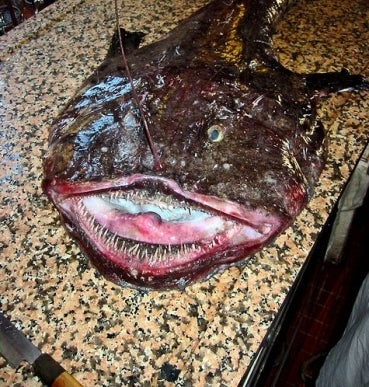When it comes to seafood, we are creatures of narrow habit. The average American eats about 15 pounds of seafood each year (well below the global average for coastal nations), almost 60% of which is either shrimp, canned tuna or salmon. That number jumps to more than 80% if you include “whitefish” like pollock, tilapia and cod.
So when one of these few items becomes overfished, too expensive or less available, the market usually just tries to pass off some other species in its place.
For example, 20 years ago, no one knew what a slimehead or American goosefish was. But when Atlantic cod fisheries crashed, low-value orange roughy and monkfish slowly gained in popularity and are now staples on restaurant menus – even though most people have no idea what the actual fish look like. What started out as worthless bycatch (also known as trash fish) that usually got dumped overboard will now routinely run you $10/lb or more in the market.
Unfortunately, Atlantic cod populations off New England are actually faring even worse today. We recently learned thatfishing quotas for 2013 will be slashed by almost 80% in certain areas compared to last year. There are several factors at play, among them decades of intense fishing pressure, ecosystem shifts and climate change. Nevertheless, we should still support New England fishermen by purchasing what little local cod makes it to market in 2013.
But how can we ensure that this iconic fishery – and others like it on the Pacific coast – don’t disappear quietly in the night? Our experience with orange roughy and monkfish provides one important answer: Previously unfamiliar fish can win the hearts of seafood lovers and help strengthen local fisheries. Read More










